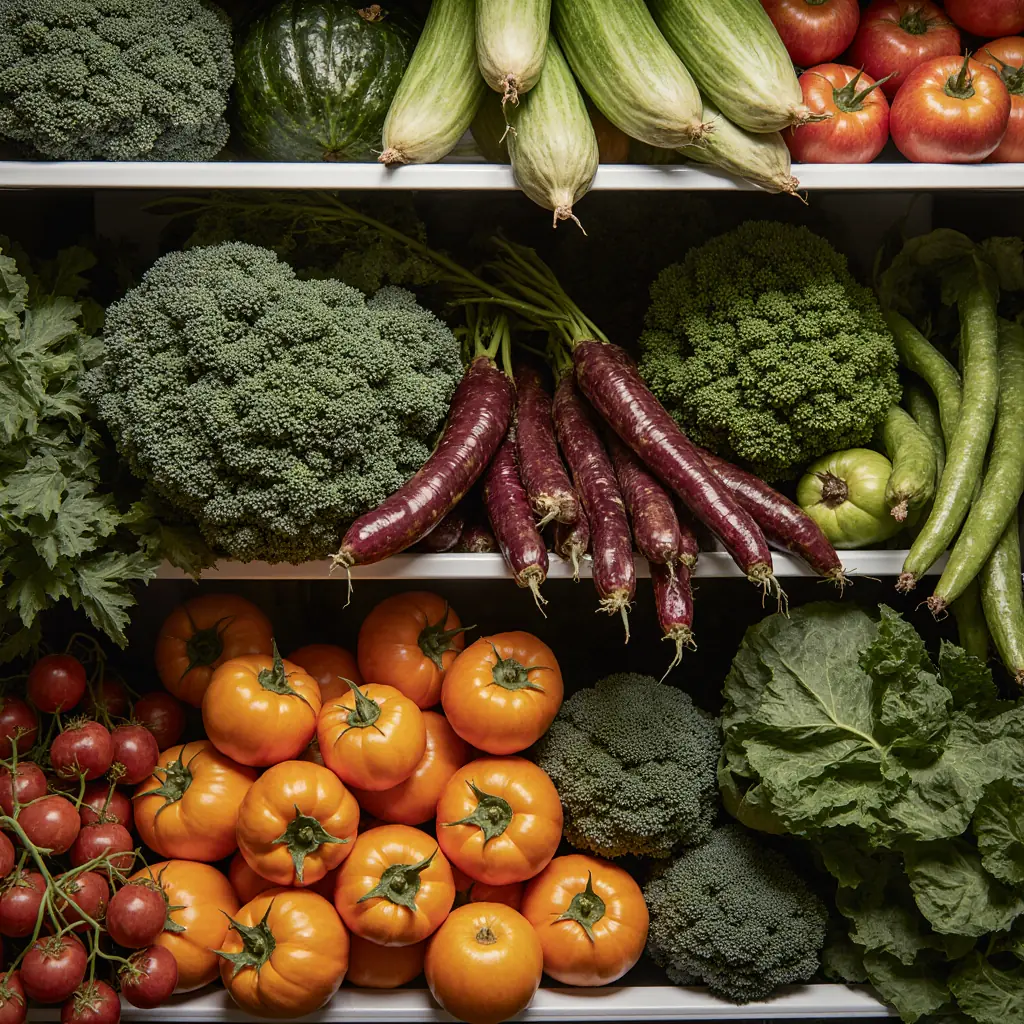Your fridge deserves a little order… and so do your veggies!

Because a poorly stored vegetable is a vegetable that wilts, molds, or becomes as mysterious as a forgotten tupperware container. Here's our smart storage guide for a more organized, eco-friendly, and less wasteful fridge
1. Bottom of the fridge: vegetable drawer = cool and humid zone
The drawer is designed to maintain controlled humidity, ideal for:
✅ leafy vegetables (lettuce, spinach, chard, arugula…)
✅ root vegetables (carrots, turnips, beets)
✅ fresh herbs (parsley, cilantro, mint)
Ugly tip: store them in slightly dampened cloth bags to extend their freshness.
2. Top and middle of the fridge: most stable temperature
Perfect for:
✅ yogurt, homemade cooked dishes, leftovers
⚠️ Avoid storing fragile fruits or vegetables here. They dry out or wrinkle quickly.
3. Fridge door: warmest zone
This is the area with the most temperature variations (opening, closing…).
Use it for:
✅ sauces, condiments, juices
⛔ Not for your vegetables (or your eggs, for that matter!)
4. Top of the vegetable drawer or above: temperate zone
Ideal for fruits that like it cool… but not too cool:
✅ apples, grapes, plums, pears
✅ citrus fruits (but not bananas, they prefer fresh air!)
Produces that hate the fridge
Some basket stars prefer room temperature:
- tomatoes (they lose their flavor in the fridge)
- potatoes (they turn black and get sweet)
- onions + garlic (they sprout or get moldy)
- bananas (they turn black too quickly)
Store them in a dry, dark, and well-ventilated place.
Quick summary: to properly store your vegetables…
- Store by zones according to temperature and humidity
- Use cloth bags or damp towels
- Don’t overcrowd: air must circulate
- Check regularly: one rotten vegetable contaminates the others!
With a little order in your fridge, your imperfect vegetables will live longer… and you’ll avoid tons of food waste
Say YES to organized vegetables and NO to forgotten ones!








